

Angkor Wat is the largest religious monument in the world and the most significant temple within the Angkor Archeological Park. It’s probably the most important place in all of Cambodia, worthy of its image on the national flag! Originally built as a Hindu temple in the 12th century it eventually changed to a Buddhist temple in the 14th century. Unlike most temples Angkor Wat is oriented to the west, indicating it was likely a funerary temple for King Suryavarman II. Enclosing the temple grounds is an outer wall measuring 3.6km long and a spectacular moat more than 5km long.
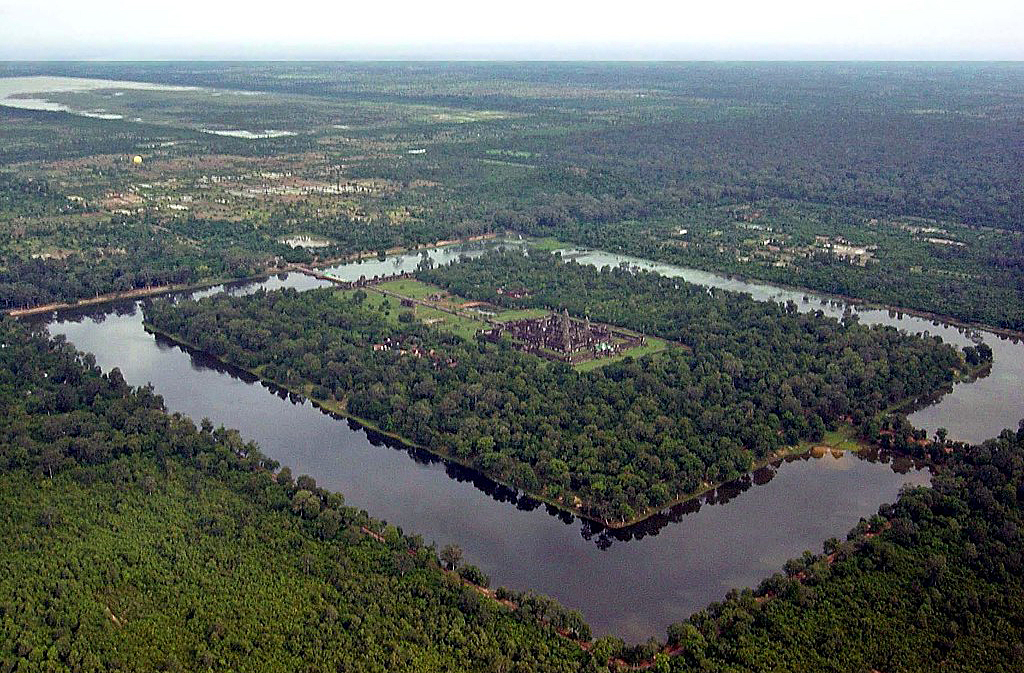
The temple is said to be a miniature replica of the universe in stone representing an earthly model of the cosmic world. The central tower symbolizes the mythical Mount Meru, situated at the center of the universe. Its five towers correspond to the peaks of Meru and the outer wall corresponds to the mountains at the edge of the world. The surrounding moat represents the oceans beyond the mountains. From a distance Angkor Wat appears to be a colossal mass of stone on one level with a long causeway leading to the center, but once inside we found a series of elevated towers, covered galleries, chambers, porches and courtyards on different levels linked by stairways.
Entering from the west it’s a 350m walk to reach the Grand Causeway over the moat. The causeway has recently re-opened after extensive renovations and the temporary, floating bridge is still in place just to the south. At the end of the causeway, we reached the Western Gopura (gate) which has several statues and over 100 Apsara bas-reliefs (Apsara are celestial nymphs or dancers).
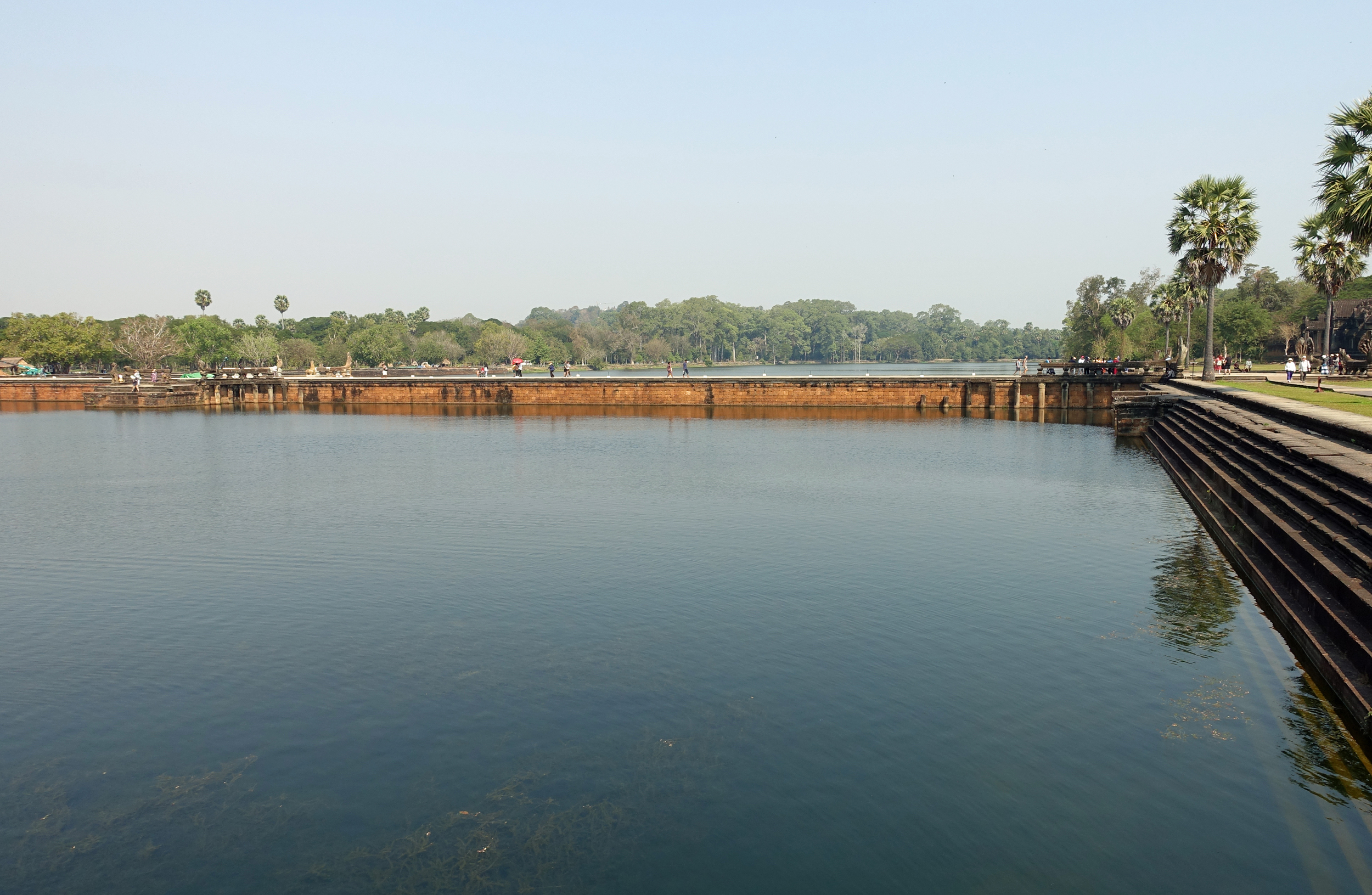

Most people, us included, rush through the western gate on their way to the temple but it’s here that one of the most revered statues in the region is located. It is thought to be the original statue of Vishnu from the central shrine, on the third level of the temple. Today it is known as Ta Reach, meaning Royal Ancestor. Fortunately we passed by this spot on our way out or we may have missed it altogether!
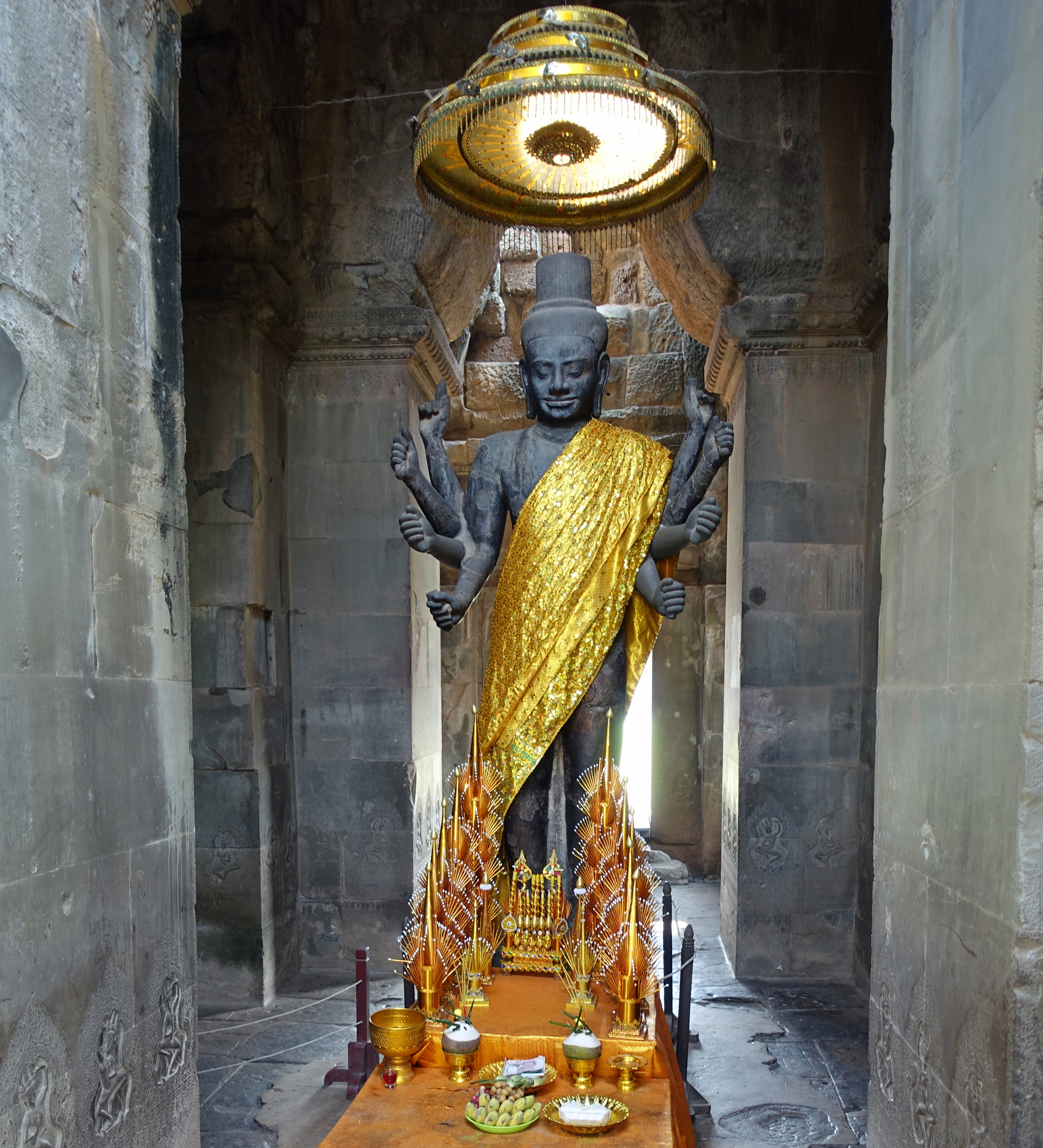
Once through the western gopura there is another long causeway, 350m in length, ending at the Terrace of Honor which leads to the main entrance of the temple. On either side of this causeway are two libraries and two ponds, it’s here by the ponds that everyone rushes to at 5:30am for that perfect sunrise photo.


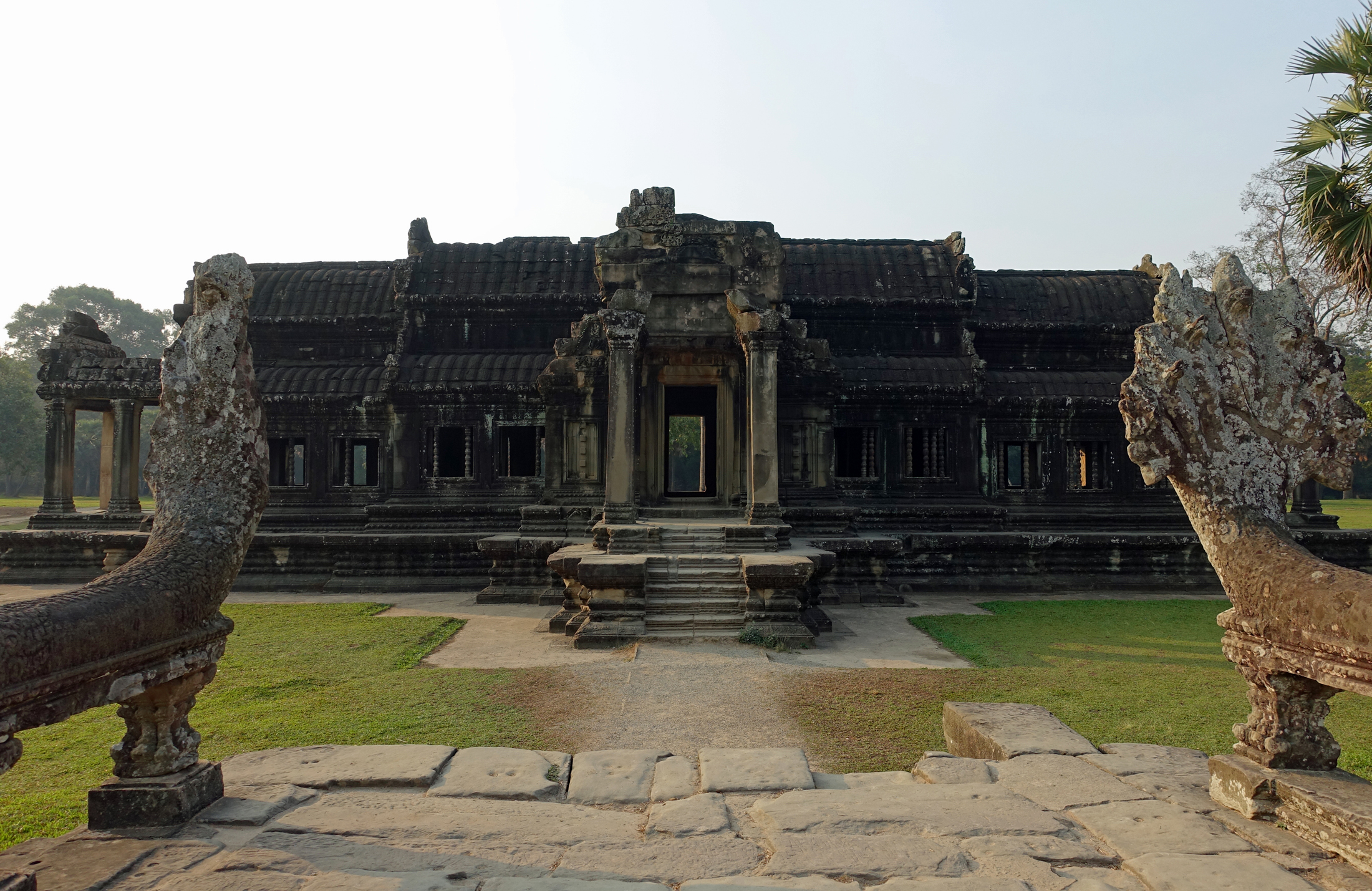
After crossing the Terrace of Honor we enter the outer level of the temple and the first thing you see are the covered galleries, filled with bas-reliefs totalling 12,917 square feet of sandstone carvings. Each relief depicts a specific theme, and the details are magnificent. It’s impossible to describe the stories these carvings tell so I will leave that to the numerous articles on the internet. These immense outer covered galleries form a square around the inner temple.
Continuing through the covered galleries we entered the “Hall of a Thousand Gods” cloister with its ponds, devata carvings, inscriptions and array of Buddha statues.
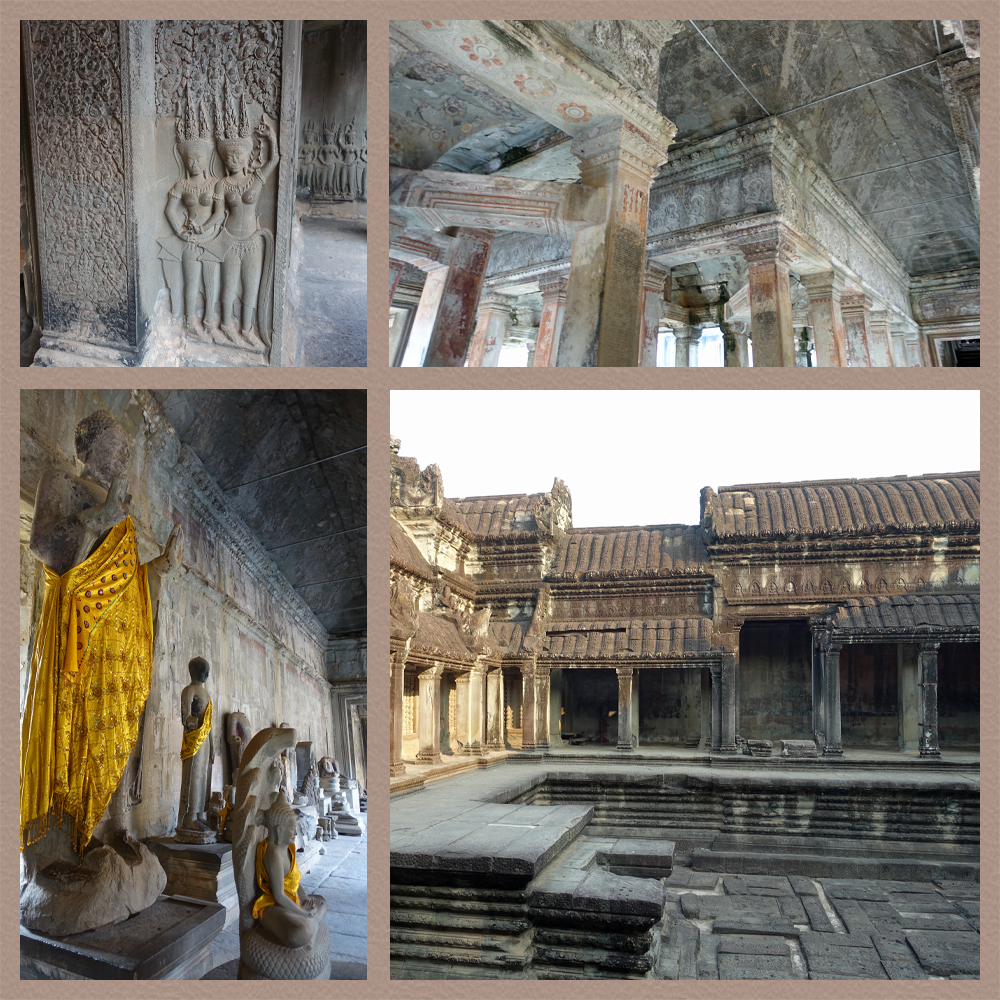
Exiting the cloister into the second level of the temple there are two small library buildings, statues and terraces. Here we found an array of Devatas at each wall corner and beautifully carved pediments above the doorways. The second level is where the steep stairway up to the Bakan is located.
Before carrying on I should explain the difference between Apsara and Devata. In my research have found the terms used interchangeably but I also found an article which explained the difference, so I have used the two names in my descriptions. Basically, the dancing female figures are Apsara and the standing figures are Devata. This makes sense since the Khmer dance performances are called Apsara shows.
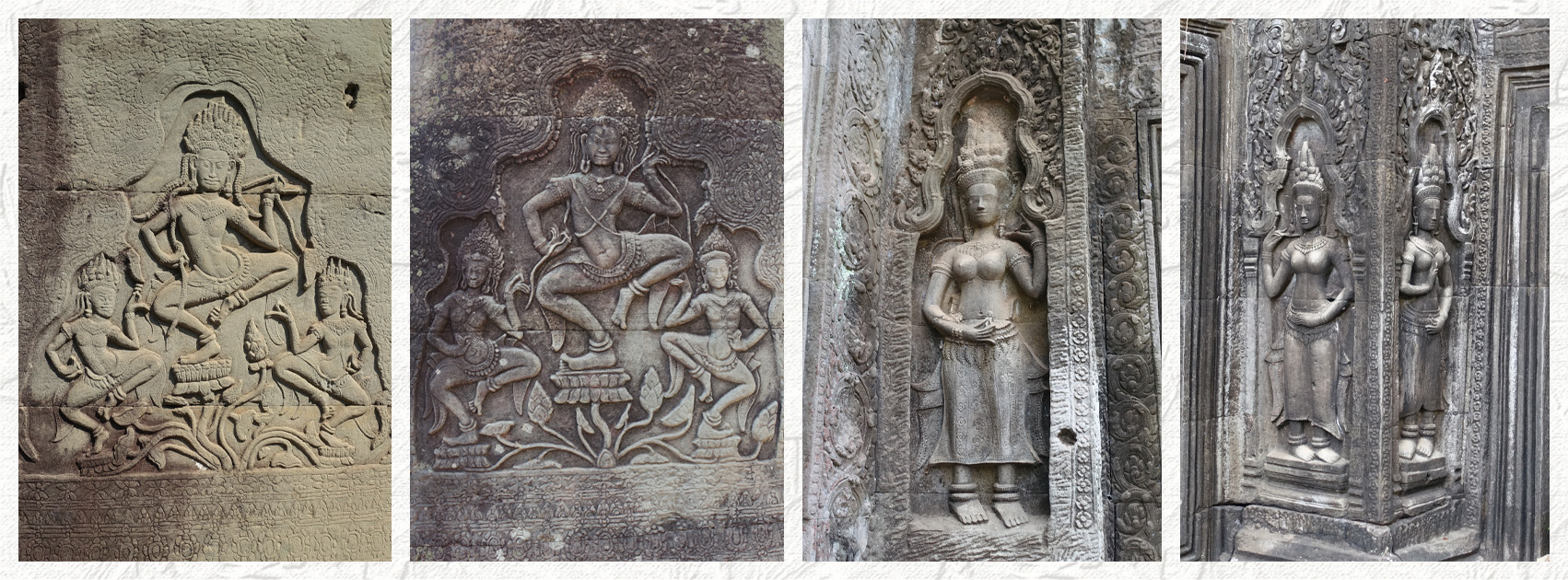
The upper level, or Bakan, is the highest point of the temple. This level is reached via a steep wooden staircase safely overlaying the treacherously narrow ancient stone steps. There is a tower rising from each corner and a massive central tower which stands above the sanctuary, the most sacred and important feature of Angkor Wat. The sanctuary tower is equal in height to the Cathedral of Notre Dame in Paris. From the Bakan level, the entire layout of Angkor Wat can be seen below. Between each tower runs a covered gallery. Underneath the central tower are stunning Devata carvings, statues and Buddhist ornaments.
Unlike other Angkor temples, Angkor Wat was never abandoned to the elements and it remains laden with artistic treasures. Even though we were here the first time over 10 years ago, we enjoyed this visit just as much as the first one, and would come back again. It’s impossible to not be in awe of this massive temple covered with intricate carvings and motifs, and for a moment try to imagine what life must have been like back then. Below are a few more random photos. (click on them to see a larger view)
Visitors have three options for entry into the park, a 1 day, 3 day or 7 day pass. We chose the 7 day pass which was valid for one month, allowing us the flexibility to visit the park at our leisure and not feel rushed. Our laminated pass has our photo and was hole-punched each time we entered the park, its also a pretty nice souvenir. The 7 day pass costs USD $72 each which is expensive, but the 3-day pass was USD $62 and only valid for 7 days, not ideal for being here 3 weeks.
We hired a tuk tuk driver just outside our hotel for USD $7 to take us to the Angkor ticket office then once we had our passes, our driver took us to the temple entrance and dropped us off, as we had requested. We arrived around 8am, after the sunrise crowds had left and before a second wave of tourists arrived around 9:30am. I think we got lucky missing the large crowds which are common this time of year.
Next up, a few more temples in the Angkor Archeological Park…..
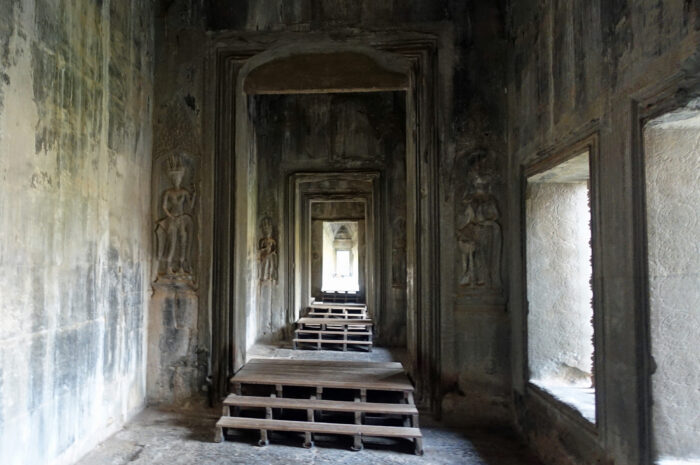
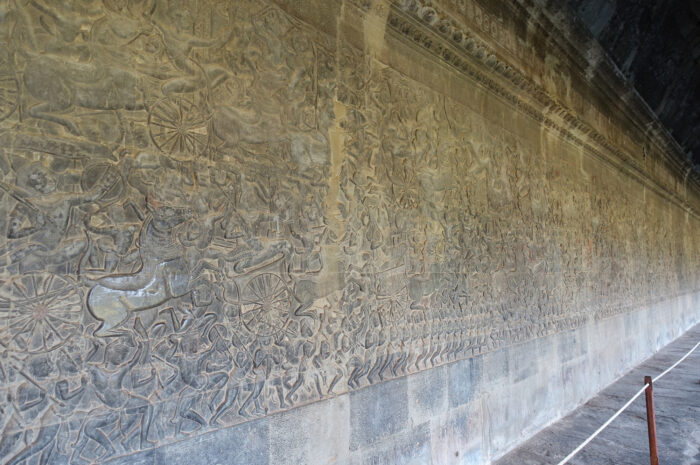
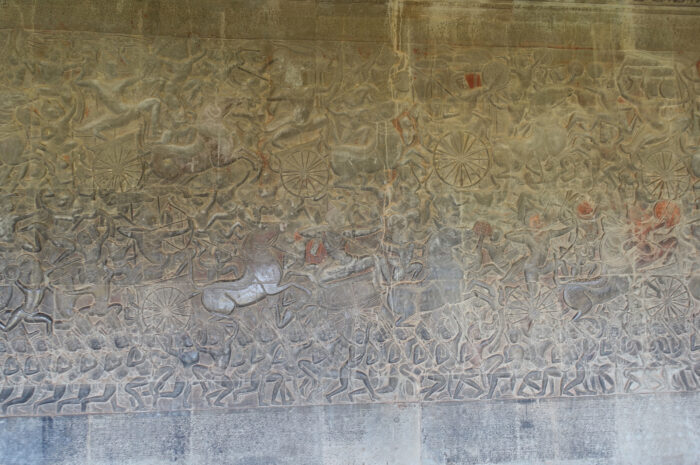
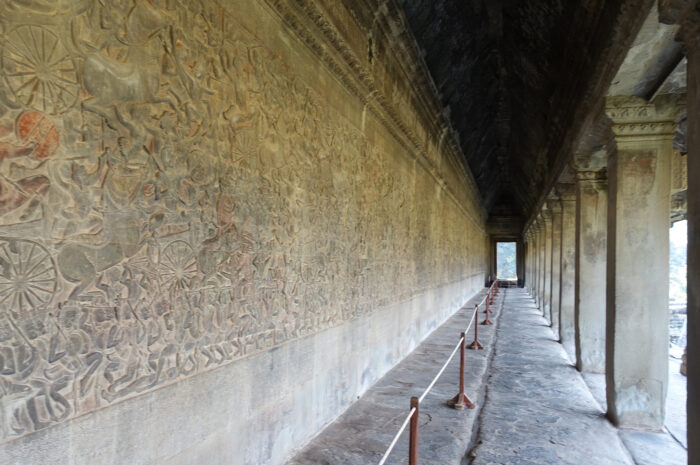
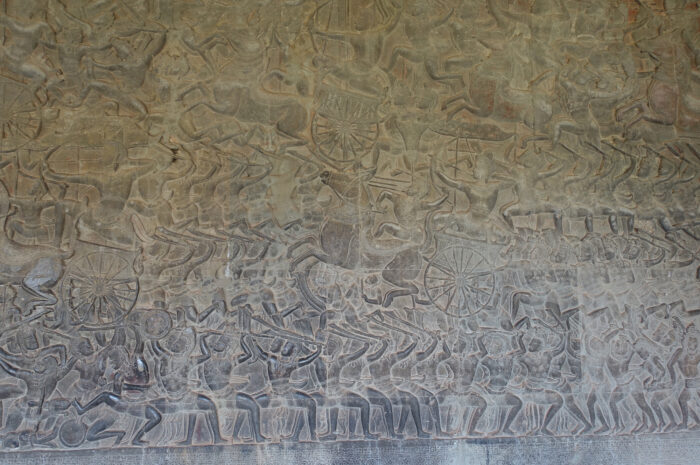
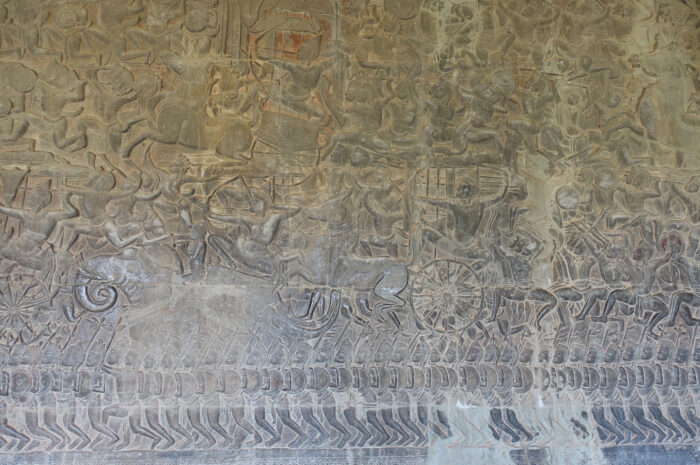
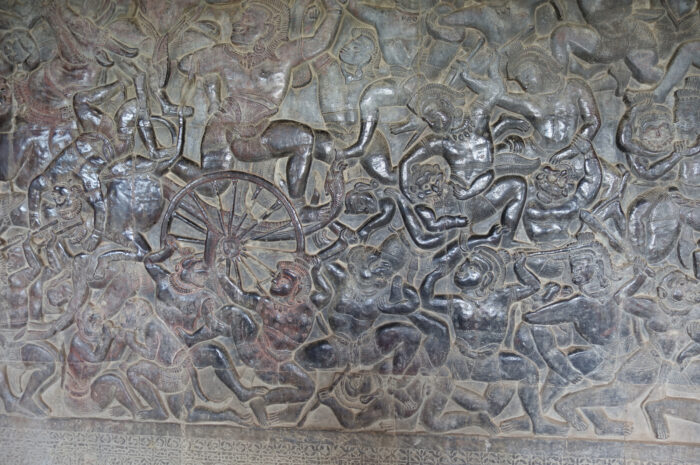
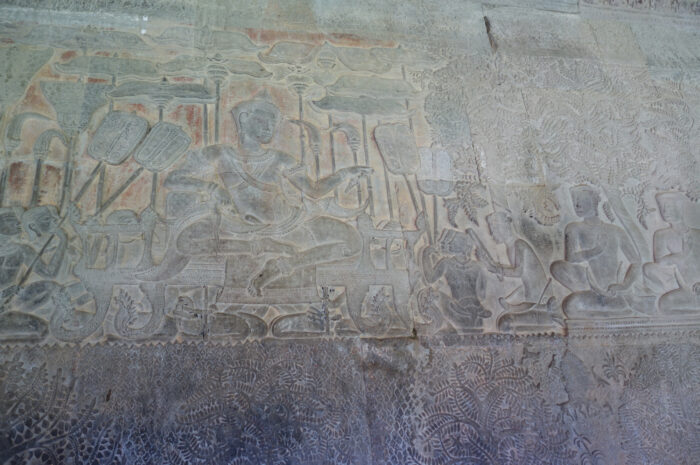

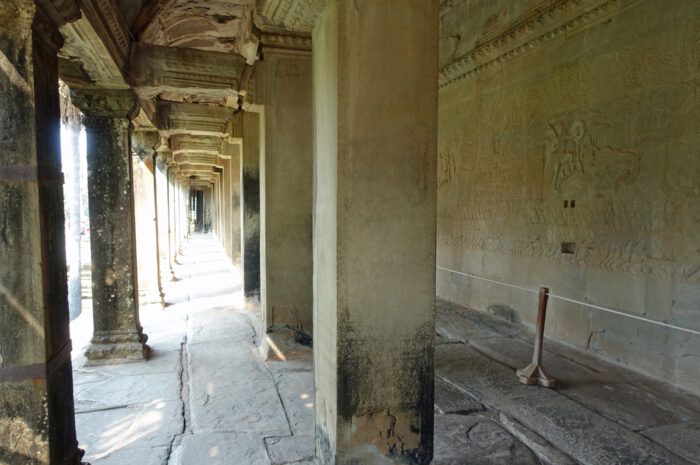
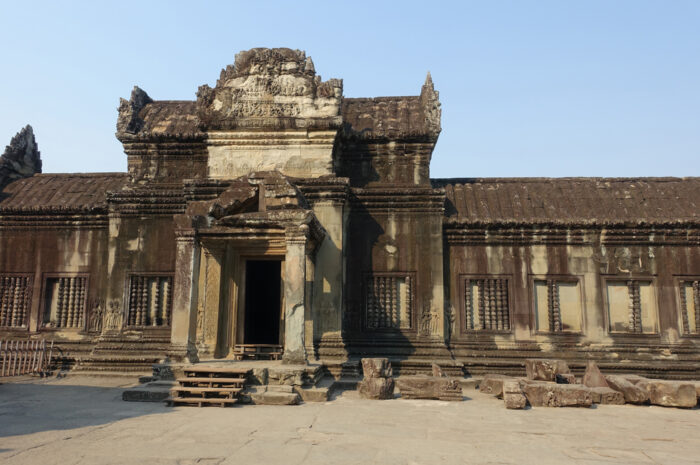
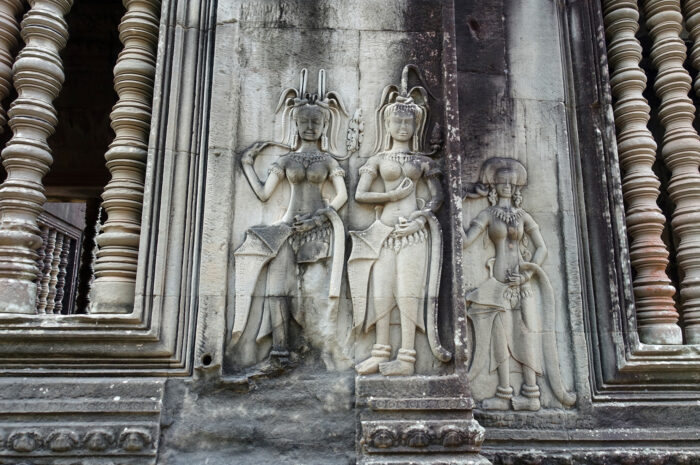

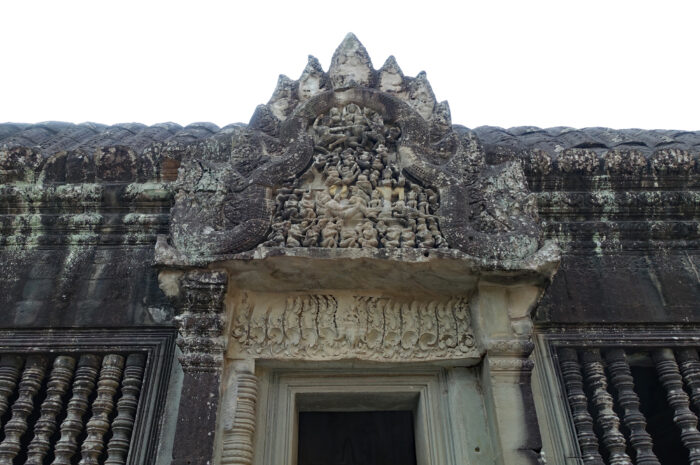
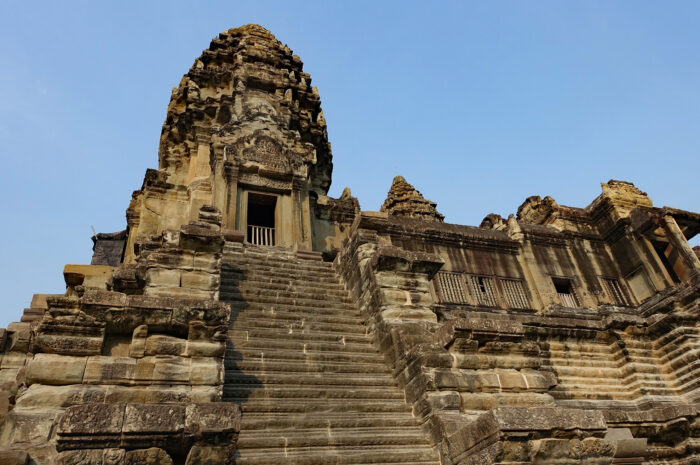
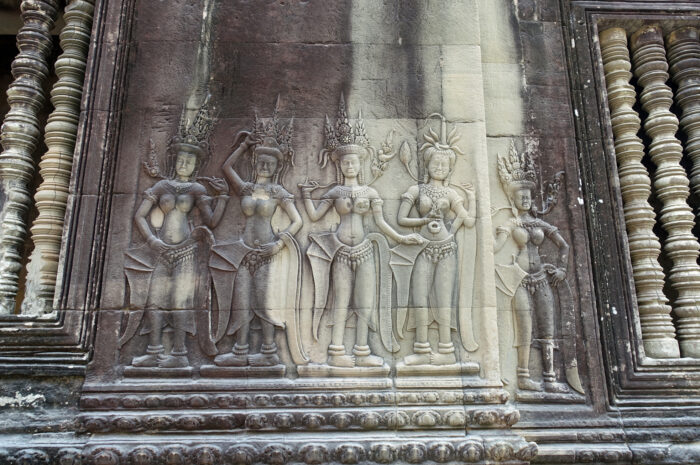

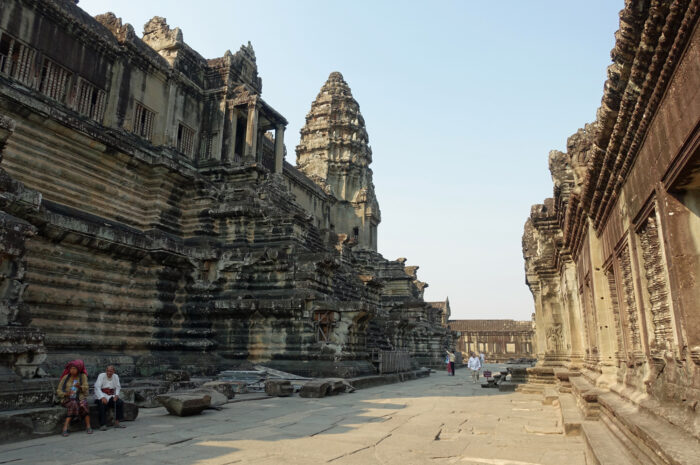
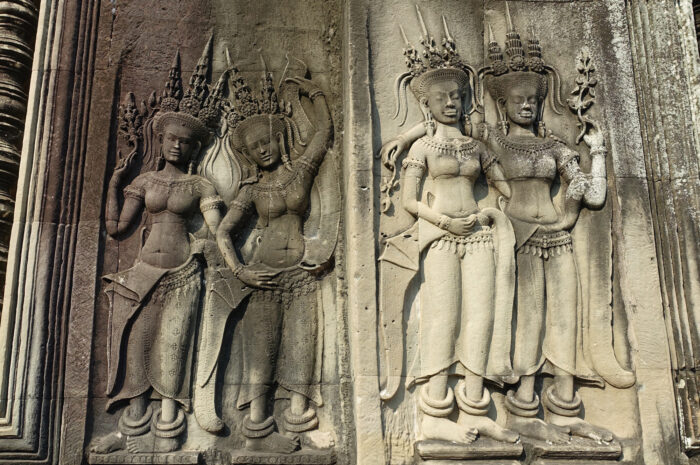
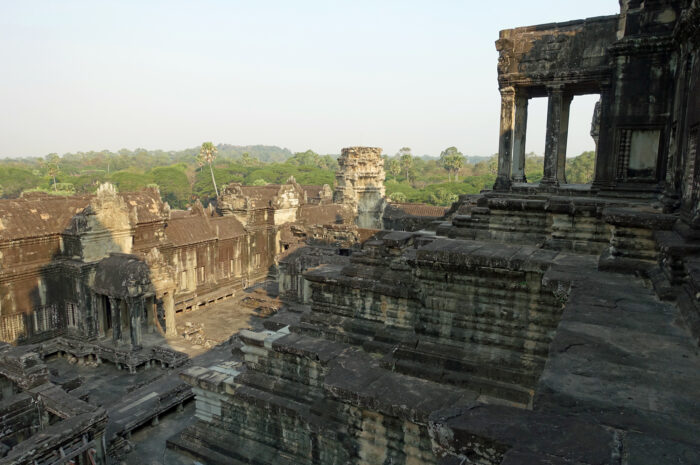
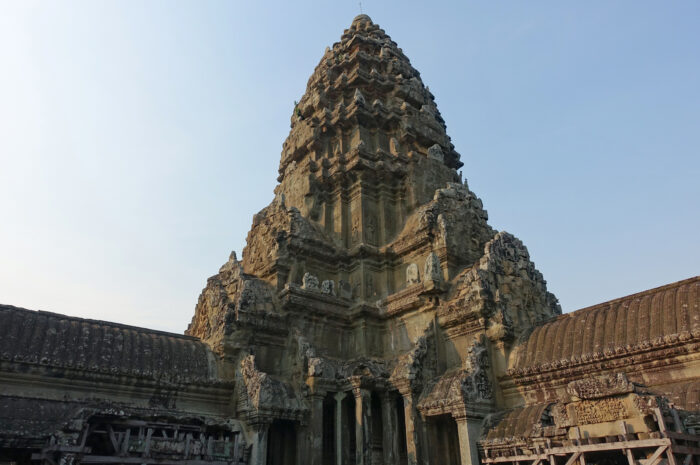



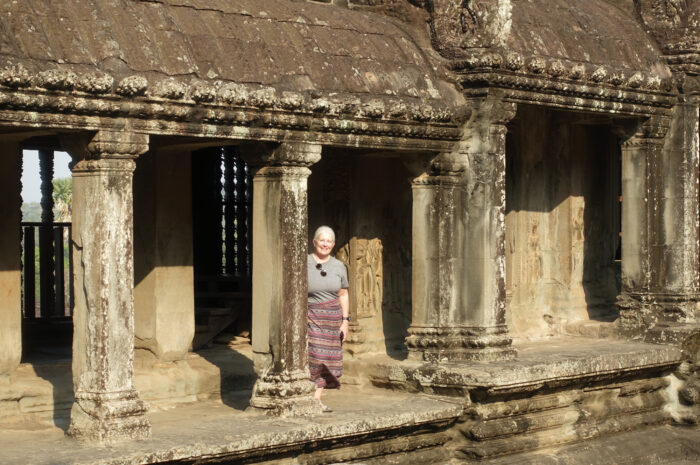

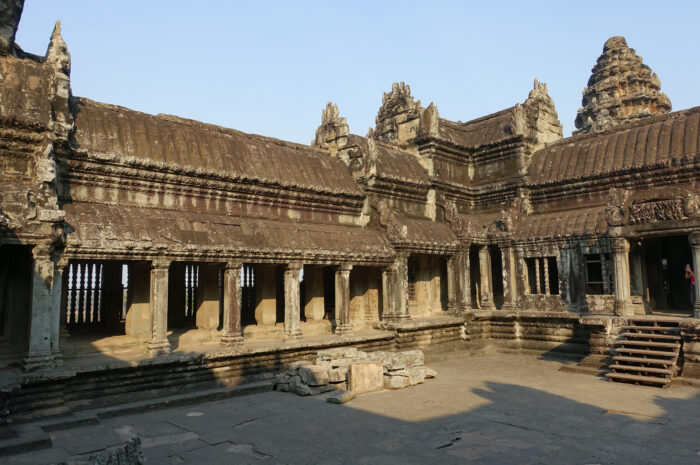
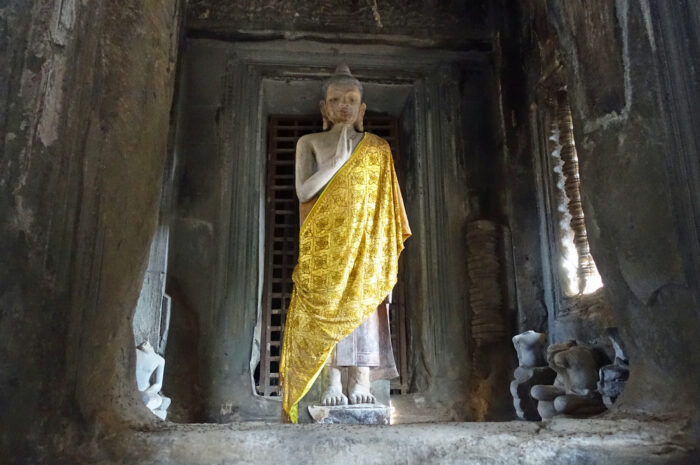
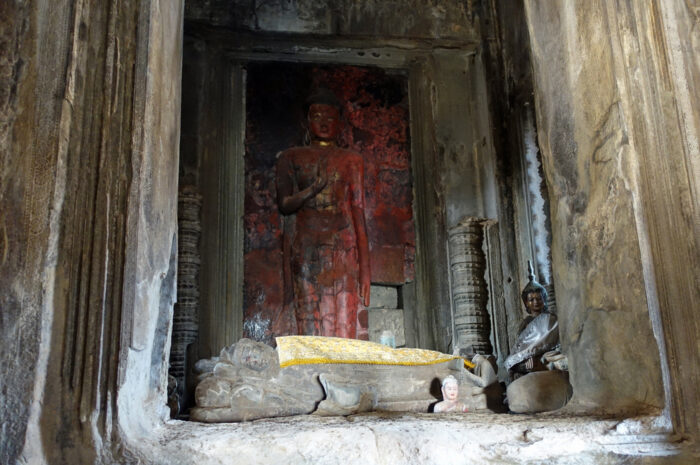


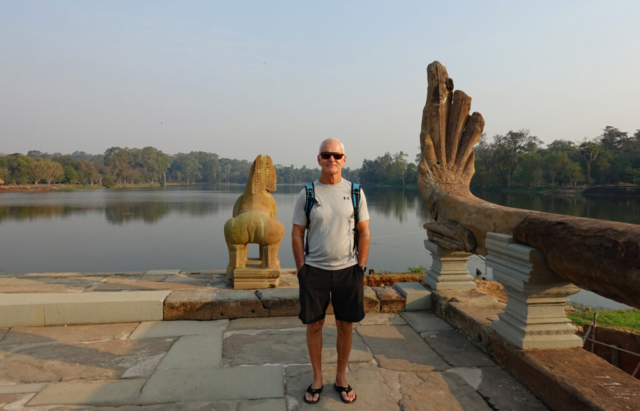
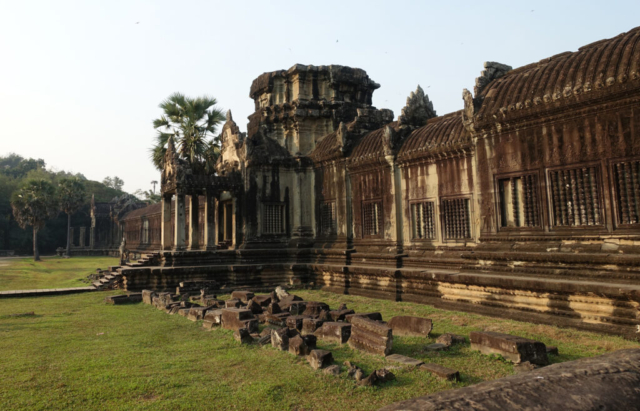
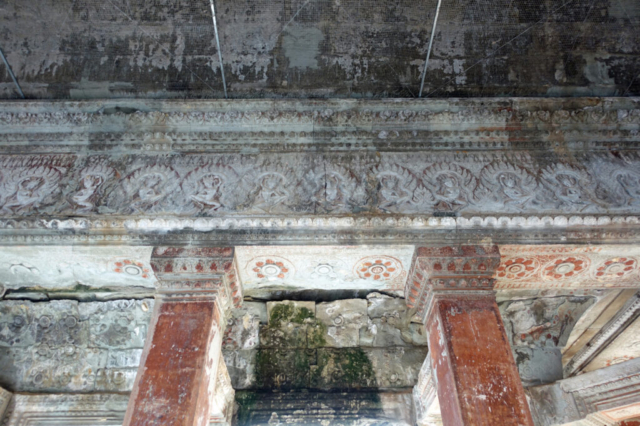
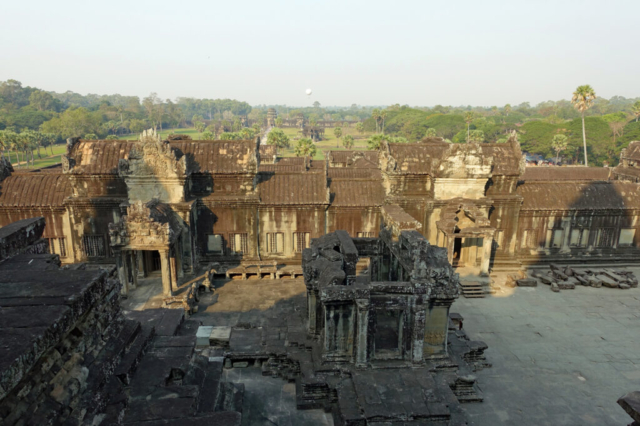


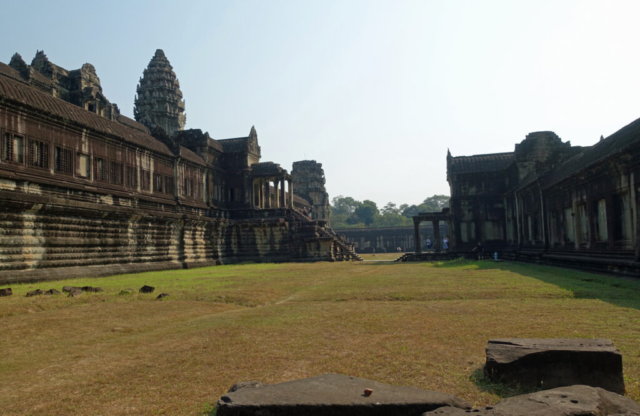

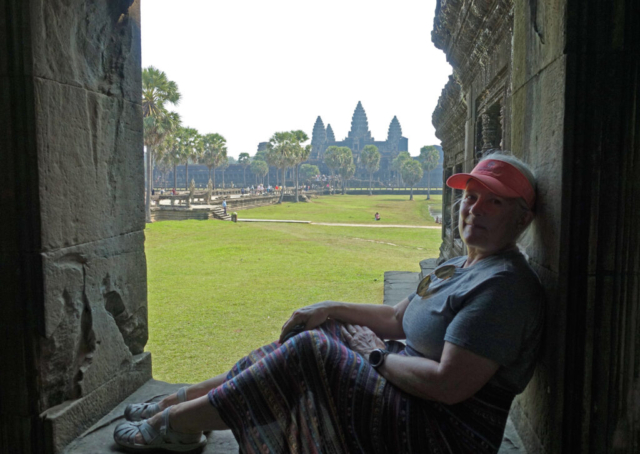
Brings back memories from my trip there 12 years ago. I was in SR for just 3 nights though.
Great place to kick back and unwind.
It is much nicer than 10 or 12 years ago and yes, a great place to spend three weeks. It’s worth staying longer around here because there is so much to see.